1) POTATOES

Incidentally、 nothing, pictures included, is copyrighted in my food blogs, so please feel free to use anything!

“Danshaku”
Potatoes were first introduced to Japan in 1910 by Baron Kawata from Great Britain/Ireland giving the name of “Danshaku/Baron” to the most commonly used potato in Japan, especially in croquettes and salads.
The biggest potato exporters to Japan are China and India, although more and more grown locally.
Over the years Japanese famers have greatly expanded the number of varieties, and it has became an embarrassment ofchoices.
Below are varieties found in Japnese supermarkets:

“Kita Akari” used for mashed potatoes and croquettes,

“May Queen” used in stews,

“Toyoshishiro” used for fried potatoes,

“Red Andes” used for croquettes and Pot au feu,

“Inca No Mezame” used for stews.
“Inca No Hitomi”. Also called “Inca no Mezame”, they are popular for their nutty taste.
“Hokkai Kogane”. Grown mainly in Hokkaido Island, they have the particularity to oxydize and change colour a lot later than other potatoes.
“Tokachi Kogane”. Can be stocked and preserved a long time. Make for great fried potato chips!
“Mathilda”. Fine-grained and usually vey regular-shaped, theycan be presented whole for good effect.
“Touya”. Very good for long cooking as they don’t break away easily.
“Star Ruby”. A relatively new viety very apt for stews.
“Cynthia”. Recently imported vaiety from France. Very fine grain. Does break up even after being cooked long time.
“Kita Murasaki”. Very unusual potato with skin and flesh of the same colour. Better fried than boiled as wate will get couloured.
“Red Moon”. Also called “Red May Queen”, great for stews.
Potatoes are available all year round, but are at their peak from May to July in Japan when new potatoes can be eaten whole!
New potatoes can be found from Februray to June.
FACTS CARD:
-Season: All year round
-76 kcal per 10 g
-Main elements: carbohydrates (high energy), Vitamin C1, B1, B2, B6 (thanks to a large amount of natural starch in potatoes, the vitamin C will resist heating!), Potassium, Magnesium, Iron.
-Preservation: Wrap potatoes inside newspaper and keep them in a dark, well-ventilated place away from the sunlight.
TIPS:
-Choose specimens well-rounded and with healthy skin. Avoid specimens with buds or of greenish colour (risks of diarrhea). Cut out all “dark spots”!
-Preserve them together with apples to prevent buds from coming out!
-To avoid a change of colour, wash potatoes in water after peeling or cutting.
-If you want to keep your potatoes for a while after boiling them, plunge them in (change it as many times as necessary) cold water until completely cooled down. They will not break or crumble when used later.
-After boiling cut potatoes, throw away water and keep heating them until they have lost a great part of their moisture. They will attain a crispy enough nature without resorting to deep-frying!
HEALTH FACTS:
-Combined with kiwi fruit or cucumber, or green tea, or mayonnaise, they help combat cancer, high blood pressure and ageing.
-Combined with Chinese cabbage, or peach, or banana, or honey, they help combat digestive disorders.
-Combined lemon, or strawberries, or spinach, or broccoli, they help combat stress, constipation and cancer.
-Combined with vinegar, or chicken, or bonito (katsuo), or oysters, they provide extra body stamina.
—————–
2) TOMATOES

SYNOPSIS:
I started this series (14 articles so far) quite some time ago to help my vegan and vegetarian (I’m not!) friends and omnivores as well because of the obvious health benefits.
Since then, I’ve learned and discovered a lot more information that could not ignored.
Therefore I plan to amend and expand all 14 former articles before I can continue introducing a lot more vegetables!
Incidentally、 nothing, pictures included, is copyrighted in my food blogs, so please feel free to use anything!
Tomatoes have laid on our tables for so long that we have almost forgotten they came from South America. The Spanish and the Portuguese ignored them. The British studied them. The French brought them to Europe under the name of “Love Apple”, a name still existing in Italy. So it is said,…

“Fruit Tomatoes”
This summer-maturing fruit can be bought all year round with the interesting consequence that tomatoes ripened in winter are sweeter than their summer cousins as they contain less water, earning themselves the name of “fruit tomatoes”, a great oxymoron, if there was one!
Thanks to consumers’ insatiable appetite for novelty, tomatoes are grown into all kinds of size, shape and colour.
Just to cite a few, the following are the most popular in Japan:

“Momotaro Tomatoes”
-Momotaro (after the Japanese “Peach Boy” tale), which becomes “Fruit tomato” in winter.

“Momotaro Tomato/Gold Variety”

“Midi Tomatoes”
-Midi Tomato (sometimes called “Plum tomatoes”), a larger cousin of the “Mini tomato”, is very sweet and very high in nutrients. Its aroma has a particularly long life.

“Italian tomatoes”
-Italian Tomato: mainly used for cooking, it may often come in a comparatively elongated shape.
It contains less water and reveals both large amounts of sweetness and acidity, making it very conducive to long cooking with the extra bonus of actually improving in taste upon heating.

“Sicilian Rouge”,both for cookingand salads.

“Mini Tomatoes”
-Mini Tomato: one-bite sized, it is also called “Petit tomato”. It contains twice as many Vitamin C, and it is very rich in beneficient ingredients.

“Yellow Mini Tomatoes”
-Yellow Mini Tomato: characteristic for a lot of sweetness and very little acidity. Very handy for children who dislike vegetables!

“Ameera Rubbins”
-Ameera Rubbins: with its larger Ammeera tomato, it is grown exclusively (until now, but they are bound to expand beyond our borders!) in Shizuoka Prefecture. They are the sweetest of all, tasting like strawberries, and very firm, making them ideal for decoration, notwithstanding their nutrient value. The smallest variety called “Rubbins” is grown by only two farmers near Iwata City!

“Micro Mini Tomatoes”
-Micro Mini Tomatoes: increasingly popular, they are only 8~10 mm and look somewhat like redcurrants. Very tasty with a beautiful acidity, the Japanese use them not only in salads, but also as the final touch on a plate of sashimi!
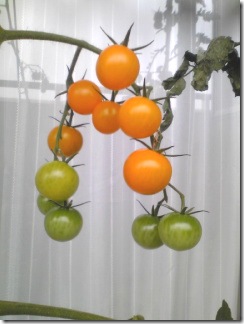
“Fruit Yellow”, a small variety popular with kids!

“Fruit Gold”, sweet and rich in vitamins!

“Nitakikoma”, a Japanewse variety which does not break away even after long cooking.

“Green Zebra”, Japanese name for green heirloom tomato
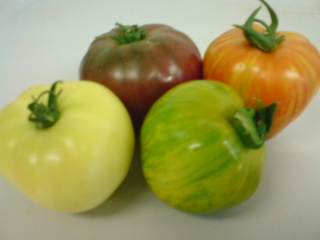
Heirloom Tomatoes grown in Shizuoka City!

“Green”, stays green when ripe

“Cindy Sweet”, well-balanced and sweet

“Aiko”, Japanese variety. Exists both in yellow and red. Eaten cooked or raw.

“Tomato Berry”, small, sweet and well-balanced.

“Campari”, grown in Hokkaido, Japan, originally from Holland. Fruity!

“Piccola Rouge”, japanese version of an Italian Mini-tomato variety.

“First”. Appears in Winter. Grown in Iwata City, too! Beautil pointed shape. Juicy!

“Piccola Canaria”, an orange variety of the Piccola.

“Kisu”. Beautiful colour and very sweet!

“Zeitaku Tomato”, meaning “Extravagant Tomato” in Jpaanese! Fruty, juicy and sweet!

“Guppi”, a tasty tomato apt for cooking.

“Carrot Tomato”. High in carotens, taste similar to carrot. Appreciated raw.

“Orange Banana” from Russia! Very sweet!

“Evergreen”. Versatile, can be eaten raw, cooked or pickled.

“Tokutani Tomato”. Fruit tomato, especially grown in Shikoku Island. Brand Tomato. Very expensive!
FACTS:
-Season: All year round
-Main elements: Licopin (Ricopin), Vitamin A, Beta, C, B1, B2, B6, Potassium, Pectin, Luchin (Ruchin), Maggnesium.
Licopin is a carotene variety particularly beneficial in fights against allergies and ageing. The Potassium and Vitamin C and Pectin help control cholesterol in blood.
Luchin reinforces capillary veins and arteries.
Recent researches in Germany and China have proven that tomatoes help control high blood pressure.
HEALTH FACTS:
-Combined with Potatoes, or Broccoli, or garlic, or onion, helps combat ageing.
-Combined with cabbage, or chilies, or spinach, helps combat cancer and helps blood flow.
-Combined with lemon, or cauliflower, or pimentoes, or parsley, helps lower blood pressure and improve blood flow.
-Combined with vinegar, or oranges, or apples, or strawberries, helps recovery from illness and injury, helps combat stiff shoulder.
Who said that the Italians look healthier than everybody else? LOL
——————-
3) BROCCOLI

SYNOPSIS:
I started this series (14 articles so far) quite some time ago to help my vegan and vegetarian (I’m not!) friends and omnivores as well because of the obvious health benefits.
Since then, I’ve learned and discovered a lot more information that could not ignored.
Therefore I plan to amend and expand all 14 former articles before I can continue introducing a lot more vegetables!
Incidentally、 nothing, pictures included, is copyrighted in my food blogs, so please feel free to use anything!
In a recent National Geographic Magazine survey, Broccoli was at the very top when considering nutrients beneficient to humans in our everyday food!
Vegans, Vegetarians and Omnivores, rejoice! Doctors, start moaning!
A cousin of cabbages and cauliflowers, the flowers are the mainly consumed part, but people forget that the stems are great, too (explained later)!
VARIETIES:

Italian red broccoli

Broccoli Romanesco, a favourite of mine!
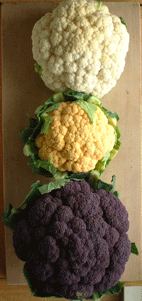
In Japan, a violet variety (bottom) is becoming popular, making for some great combinations with white and yellow cauliflower,

and other dishes!
FACTS:
-Season: November to January and March to April in the Northern Hemisphere.
-Main elements:
Carotene, Vitamin A, Beta, C and Vitamin E in very large amounts. Together they combine as an elixir to fight ageing and stress.
Potassium
Iron, which helps increase red blood cells and control cholesterol.
Calcium
Fibers, which help digestion.
Sulforafan which helps fight poisonous intruders.
TIPS:
-As I said above, the stem is not only edible, it is succulent, with a taste between avocadoes and asparaguses! Peel the skin, cut it in any shape you wish and boil it for a while in slightly salted water. let cool and use for salads, stews and gratins!
-Choose specimens with big and dense buds, shiny and fat stems. Check whether the cut at the stem looks fresh!
-After boiling in slightly salted water, plunge into cold water immediately. The colour will not change!
-Preservation: Wrap in wet paper towel, seal it inside a polyester rigid box and keep inside refrigerator’s chilled compartment away from light.
As it will change in contact with natural light, better to cut it, boil it, cool it, seal it inside vinyl pouches and freeze if you have too much of it!
HEALTH FACTS:
-Combined with Garlic, or onion, or pimentoes or vinegar, helps activate blood flow, combat high blood pressure, blood vessel rigidity and heart fatigue.
-Combined with red wine (yes!), or tomato, or egg-plant/aubergine, or carrot, helps combat cancer and encourages rejuvenation.
-Combined with tuna (aha!), or sardines, or soy beans, or olive oil, helps combat ageing and blood vessel rigidity.
-Combined with liver, or cockles, or clams, or cauliflower, helps build blood red cells, combat cold extremities, and provides stamina.
———————–
4) CARROTS

SYNOPSIS:
Carrots are consumed everywhere in the World, raw or cooked in so many manners, including desserts, that you need a whole book to describe all the recipes! And you might have to come up with a special addenda leaflet to introduce all its varieties!
Now, people might have forgotten that this cousin of the spinach orignated from Afghanistan before it was first introduced in China and Europe (by the Dutch) in the 12th Century. Japan had to wait until the 16th Century before the Chinese brought it to the Island of the Rising Sun.
FACTS:
Some time ago carrots were not popular in Japan because of their strong taste characteristics, but the Japanese have come with sweeter and softer varieties:

“Kyo-Ninjin”, a variety developed in Kyoto, with a deep dark red colour and very sweet taste.

“Go-Sun Ninjin”, the most common in Japan.

“San-Sun Ninjin”, a smaller variety of the above.

“Daijyo Ninjin”, a very and thin variety very popular in Japanese restaurants! Great for sticks!

“Kinji Ninjin”, probably the most elegant of them all!

“Kiiro Ninjin”, beautiful and very sweet!

“Mini Ninjin”, so much fun!

Now, do not forget the leaves which contain an enormous amount of Vitamin C!
-Season: May to June, and October to December in the Northern Hemisphere.
-Beneficial elements:
Carotenes
An absolute need for humans. Carotenes are more easily absorbed by the body systems when the carrots are eaten together with oil, dressing or “glace”.
Vitamin A, Beta Caroten, B1, B2, B6, C, Potassium, Calcium (very high!), fibers.
TIPS:
Preservation: Carrots should not be kept inside too cold fridges. Protect them by wrapping them into newspaper “standing up”, or into cellophane paper if they are cut.
Choose specimen with a good constant colour and with a small stem core if you buy them with leaves already cut away.
Important: When you peel them, do so as thinly as possible as the majority of the carotenes lie just under the skin!
HEALTH FACTS:
-Combined with onions, or seaweed, or celery, or tofu, helps combat colds, diabetes and constipation and helps hair regeneration.
-Combined with Chinese cabbage, or Cabbage, or tomato, helps combat cancer, ageing and helps withfaster recovery from illness.
-Combined with seaweed, or burdock root, or bamboo shoot, or devil’s tongue tuber, helps combat constipation, high blood presure and clean digestive system.
-Combined with Broccoli, or pimentoes, or kabocha/pumpkin, helps combat skin colour change and helps with body revitalization.
———————-
5) SWEET POTATOES

Yams or “Satsuma Imo” were first introduced to Japan in the Ryukyu Islands (Okinawa) in 1604 by the Chinese. It was then introduced in Kyushu in 1609, an area that grows 80% of the total Japanese production.
As rightly pointed out by Cometiblog, sweet potatoes should not be confused with yams or yama imo/山芋 in Japanese.
It has been recognized in this country for a long time for both its nutritional and pharmaceutical qualities.
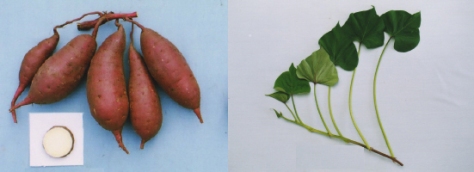
There are over a hundred species in Japan, but the most popular edible ones (not the ones exclusively used for making shochu) have red skins and light yellow flesh.
Beni Azuma, mostly eaten in Eastern Japan. Turns very sweet upon cooking.
Naruto Kintoki, popular in Western Japan. Considered elegant and sweet.
Tosabeni, also attributed “No 14 value (top)”, is very sweet and is a “brand name” sweet potato.
Cheese cake combination with Tosabeni Sweet Potato!
Manamusume, another “No 14 value” brand sweeet potato.
Gorou Shima Kintoki, particularly popular as baked sweet potato.
Kogane Sengan, considered as the top shochu sweet potato.
Tanegashima Mukashi Mitsu, a sweet potao with a beautiful orange colour and elegant taste.
Tanegashima Murasaki Imo, as above, but with a beautiful purple colour.
Annou Imo, rich in carotens, with a beautiful orange colour and very sweet.
Annou Imo cuisine!
Purple Sweet Road, an interesting name for a sweet tasty hybrid.
The same as above as hyokan Japanese jelly!

My personal favorite is the “Tanegashima Gold Imo” grown in Taneko Island south of Kyushu. It has the particularity of being red when raw before chaning to a rich golden color when cooked. Among other varieties, the violet sweet potatoes are getting increasingly popular.

Tanekoshima sweet potato (deep yellow), “common sweet potato” (light yellow) and Murasaki/Violet potato.
The Missus particularly likes to mix the three above as a cold salad with mayonnaise or cream-based dressing.
FACTS:
-Season: September to November
-Main elements: Carbohydrates, Carotene, Vitamin B, C, E. Potassium, Calcium, Magnesium, vegetal fibers.
-Beneficial to digestion. Good for the skin!
-Lose very little of its beneficial elements even after a long cooking.
TIPS:
-Choose specimens with nice color and a “fat/roundish” aspect!
-Plunge yam in cold water as soon as you have cut them. They will not lose their color!
-Boil, bake or steam long enough before taking skin off. Discard skin!
-Leaves can be eaten!
HEALTH FACTS:
-Combined with burdock root, or shiitake, or carrot, or spinach, helps combat colds, helps enhance skin health, helps combat llung and intestine cancer.
-Combined with devil’s tongue tuber, or hijiki sweet seaweeed, or beansprouts, or apple, helps combat cancer, constipation, obesity, and artery hardening.
-Combined with Judas ear mushroom, or shiitake, or seaweed, or hijiki sweet seaweed, helps lower blood cholesterol, helps combat obesity and diabetes.
-Combined with strawberries, or lemon, or pimentoes, helps combat stress, helps skin rejuvenation and intensifies appetite.
————————–
6) ASPARAGUSES

Asparagus has been used from very early times as a vegetable and medicine, owing to its delicate flavour and diuretic properties. There is a recipe for cooking asparagus in the oldest surviving book of recipes, Apicius’s third century AD De re coquinaria, Book III. It is said that it was cultivated by the ancient Egyptians, Greeks and Romans, who ate it fresh when in season and dried the vegetable for use in winter.It lost its popularity in the Middle Ages but returned to favour in the seventeenth century.
FACTS:
-Season: They are at their best March~June in the Northern Hemisphere, but can be obtained all year round thanks to state-of-the-art greenhouse cultivation.
-Beneficial elements: Carotene, Vitamin C and E, Vitamins from the B group (B1, B2, B6), Rutin, Vegetal fibers, Folic Acid, Potassium. The amino acid asparagine gets its name from the plant.
-Asparagus rhizomes and root are used ethnomedically to treat urinary tract infections, as well as kidney and bladder stones.
-Asparagus is also believed to have aphrodisiac properties (this belief is at least partially due to the phallic shape of the shoots).
TIPS:
-Choose asparaguses with a clean cutting surface. No black spots should appear.
-The darker the colour, the better. As for white asparaguses, choses with a “wet cutting”
-When storing your asparaguses in the fridge, have them stand upright in a long narrow container with their foot wrapped in wet kitchen paper. Discard bent asparaguses on the supermarket stands.
-Choose green asparaguses with the smallest possible foliage along the stems and dark tips.
-When boiling them, either boil them stading upright inside a pasta mesh container, or absolutely flat in a sauce pan. Do not bend them.
-Asparaguses are best digested when lightly fried with oil.
-If Asparaguses cannot be obtained directly from the farmer, lightly peel but keep yop half as it is to preserve Vitamins.
Varieties:
Most popular varieties are shown in the picture above: White, Green and “wild-style” (apeelations vary!)

Asparaguses are abundant in the while, but they grow very quickly and get too hard for consumption.
The wild ones picked in their natural environment are my favourite as I fondly rememebr picking them up as a soldier in the South of France during our drills and cooking them in simple omelettes!

Violet asparaguse are very popular in any restaurants!

Mini-asparaguses are ever so popular in Japan thanks to their practical size.

Recipes are endless, but my favourite is the large green asparaguses and mozzarella gratin as prepared and served at Uzu Izakaya in Shizuoka City!
HEALTH FACTS:
-When combined with seaweed, or carrot, or Broccoli, or Spinach, provides stamina and helps combat cancer and colds.
-When combined with shellfish, or chicken, or turnips, or red-fleshed fat fish, helps combat liver problems and provides stamina.
-When combined with okr, or avocado, or celery, or garlic, heps combat cancer, high blood pressure and heart diseases.
-When combined with onion, or codfish, or tofu (especially yuba), or konnyaku/devil’s tongue tuber, helps with qaulitey and flow of blood, helps combat obesity and blood vessel hardening.
————
7) EDIBLE FLOWERS

(5 edible flowers and water cress salad)
The other day, while I was shopping at the big supermarket at the Shizuoka JR Station I was reminded of a recent post by Natasha at 5 Star Foodie when I noticed edible flowers on sale.
Edible flowers have been on the Japanese markets for quite a few years already.
They tend to first appear in late winter, although it is only a question of time when they will be sold all year long!
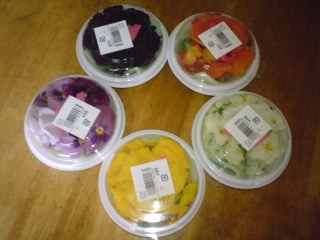

They come in very cheap, at 98 yen a small box (1 US$), but they ought to be used as early as possible.
Aichi Prefecture, our neighbour Prefecture seems to have become the largest growing area in Japan.
Thai, Indian and Persian citizens, as far as I know, have been using flowers in food for quite some time. The Japanese have served mini-chrysanthemum and perilla flowers since immemorial times.





Most edible flowers are of the pansy, snapdragon, primura, roses, Cosmos, nasturium and so on.
Do you recognize some of them above?
FACTS:
Now, the great news is that they contain an enormous amount of Vitamin A carotene:
1,100 to 9,400 micrograms per 100 grams as compared to 390 micrograms for tomatoes, 720 micrograms for broccoli and 3,100 micrograms for spinach.
as well as Vitamin C:
230 t0 650 mg per 100 grams as compared to 20 mg for tomatoes, 100 mg for spinach and 160 mg for broccoli!
TIPS:
The Japanese will use them either in flower or vegetable salads or on cakes.
Perilla flowers/shiso no hana are regularly served with sashimi or many kinds of fresh foods!
HEALTH FACTS:
-Edible Chrysanthemums combined with shiitake or mackerel enriches the blood, helps combat ageing and stress.
-Edible Chrysanthemums combined with wakame/seawedd or ginger helps combat muscle/body swelling and helps lower blood pressure.
-Edible flowers combined with oil is a generally beneficila combination.
-Edibke flowers combined with grapefruit or strawberries are beneficial to the skin and helps combat ageing.
One small advice for caution: don’t overeat them as they have purgative powers!
The best season for edible flowers is from September to December in Japan.
————————
8) LEEKS

Leeks, or “negi” in Japanese, are an almost universal vegetable.
It is used in cuisine at restaurants and homes on all continents and have been recognized for ages as very beneficial plant.
Recent research has demonstrated that They are an effective cure against colds in particular, not only for humans, but for many animals, too.
Some people do not appreciate them because of their pungent smell and taste, but this can be taken care of with a couple of simple steps.
Back home in France, we boil the central part of fat leeks and eat them under the name of “poor man’s asparaguses”!
FACTS:
-Season: leeks can be bought all year round, but the best season is from November to February in the Northern Hemisphere.
-Main beneficial elements: Carotene (green part), Vitamin C (white part), Calcium, Vitamin B1 (beneficial for blood circulation), B2, B8, Potassium, Calcium (in big amounts!), Iron, Manganese, vegetal fibers.
TIPS:
-Fatter specimens will have more taste.
-Choose specimens with a “wet” bottom cut.
-If you use large specimens raw in salads, first cut 5~8 cm long sections, then cut them thin lengthwise and leave them some time in clean cold water. The pungency will greatly diminish.
-To chop leeks for cooking, cut them first in 5~10 cm sections, then cut them thin lengthwise, and only then, chop them crosswise.
VARIETIES:
There are innemurable varieties in the World, but I will introduce here the main varieties encountered in Japan:

“Senju”
The most common and popular variety

“Hakata Manno”:
A choice specimen raised in Kyushu Island

“Me” or “Hime”:
Could be called leek sprouts,too.
Eaten raw in salads, sushi, finger foods.

“Ito” or Thread Leek, used in the same way as “Me/Hime”.

“Koshizu”, another common and popular variety.

“Kujo-Futo”:
A choice specimen originting from Kyoto.

“Kujo Hoso”. Same as above, but a lot thinner.
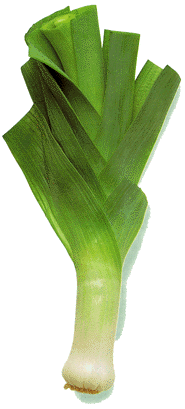
“Riiki”
A short fat specimen popular for “nabe” and soups.

“Shimonita”.
A fat variety with a short stem and long leaves. Popular with soups and “nabe” (Japanese-style pot-au-feu)

“Aka Negi”
Red Leeks in Japanese, soft with little pungency. Considered as a delicacy.
HEALTH FACTS:
-Combined with Juda Ear Mushrooms, or sardine, or mackerel, or seaweed, heolps lower blood cholesterol and high blood pressure, and prevents blood vessels hardening.
-Combined with umeboshi/Japanese pickled plums, or Japanese sake, or ginger, or shiso/perilla, helps prevent and cure colds, combats ageing and helps recovery from diseases.
-Combined with onion, or cucumber, or garlic, or Judas’ Ear mushrooms, helps blood flow and combats blood clotting.
-Combined with seaweed/wakame, or sweet potato, or lotus root, helps combat constipation and obesity.
——————–
9/1: MUSHROOMS/SHIITAKE

(Mushrooms at at a Shizuoka Supermarket)
I don’t intend to talk about wild mushrooms here as I would need a very thick book to post!
Japan is arguably the country cultivating the greatest number of varieties ( new ones appear and disappear every year!), so I will limit myself to give information on at least four of them and furthermore introduce most varieties I have found in Japanese supermarkets (most of them should be available in many countries.
SHIITAKE

(Mushrooms at at a Shizuoka Supermarket)
I don’t intend to talk about wild mushrooms here as I would need a very thick book to post!
Japan is arguably the country cultivating the greatest number of varieties (new ones appear and disappear every year!), so I will limit myself to give information on at least some of them and furthermore introduce most varieties I have found in Japanese supermarkets (most of them should be available in many countries).
SHIITAKE

FACTS:
Shiitake/Lentinula Edodes (Black Forest Mushrooms) are native to China but have been grown in both Japan and China since prehistoric times[2]. They have been cultivated for over 1000 years; the first written record of shiitake cultivation can be traced to Wu Sang Kwuang, born during the Song Dynasty (AD 960–1127). However, some documents record the uncultivated mushroom being eaten as early as AD 199.
Fresh and dried shiitake have many uses in the cuisines of East Asia. In Chinese cuisine, they are often sauteed in vegetarian dishes such as Buddha’s delight. In Japan, they are served in miso soup, used as the basis for a kind of vegetarian dashi, and also as an ingredient in many steamed and simmered dishes. In Korean cuisine, they are commonly used in dishes such as bulgogi (marinated grilled beef), jjigae (stews), and namul (sauteed vegetable dishes). In Thailand, they may be served either fried or steamed.
Shiitake are often dried and sold as preserved food in packages. These must be rehydrated by soaking in water before using. Many people prefer dried shiitake to fresh, considering that the sun-drying process draws out the umami flavour from the dried mushrooms by breaking down proteins into amino acids and transforms ergosterol to vitamin D. The stems of shiitake are rarely used in Japanese and other cuisines, primarily because the stems are harder and take longer to cook than the soft fleshy caps. The highest grade of shiitake are called donko in Japanese.
Extracts from shiitake mushrooms (such as ichtyol) have also been researched for many other immunological benefits, ranging from anti-viral properties to possible treatments for severe allergies, as well as arthritis.
The Japanese actually consume them from their raw form more than in any other country.
FACTS:
-Season: best in October~March for outdoors cultivation
-Main beneficial ingredients: Vitamin B1, B2, B6, c, N6, Ergosterol, Lentinan, Fibers, Potassium, Magensium, Phosphorus.
TIPS:
-Loosely wrap them in clean Newspaper or Kitchen Paper and store them in fridge away from the light.
-Choose specimens with unbroken “umbrella” and no black marks under.
-Fresh Shiitake are best enjoyed for their taste by keeping their cooking simple such as fry them over a grill with a dash of soy sauce and sake!
-If you want to dry them, do so under sunlight for best taste!
-Preserve dried shiitake in fridge to avoid mold and insects!
HEALTH FACTS:
-Dried shiitake contain more Vitamnin D!
-Combined with burdock root, or broccoli, or carrot, or asparaguses, helps combat cancer and helps with skin rejuvenation.
-Combined with konbu/seaweed, or spinach, or sardines, or sesame, helps combat bone diseases, activates blood circulation, helps combat nervous problems and rheumatism.
-Combined with sesame, or walnuts, or kabocha, or mayonnaise, helps combat ageing.
-Combined with celery, or cuttle fish/squid, or octopus, or mackerel, helps reinforce liver, combats high blood pressure, heart diseases and artery hardening.
———————
9/2 Japan Cultivated Mushrooms:

Mushrooms at Supermarket in Shizuoka City
This the second part concerning edible mushrooms in general.
Instead of going through one by one, which might turn into a boring chore, let me show what is available in Japan!
I don’t intend to talk about wild mushrooms here as I would need a very thick book to post!
Japan is arguably the country cultivating the greatest number of varieties (new ones appear and disappear every year!), so I will limit myself to give information on the varieties I have found so far in Japanese supermarkets (most of them should be available in many countries.
Note that the names are in Japanese as most are marketed this way abroad.
ERINGE or ERINGI
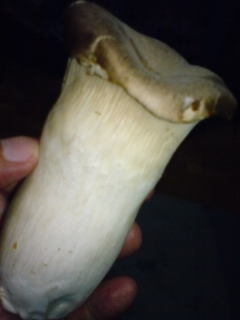
Very interesting mushrooms as they keep firm and lose only some of their volumes. Vegetarians can prepare them suteed like scallops!

As sold in the supermarkets
TAMOGITAKE

As found in the nature

As human-grown.

As sold in the supermarkets
Very elegant small mushroom
KIKURAGE

Called Judas Ear, as sold in the supermarkets.
BUNAPII

As found in the supermarkets. A rcent variety!
BROWN MUSHROOM

Brown Mushrooms are called so in Japan. Ther are a variety of Agaricus originall imported from Canada.
As found in the supermarkets.
TAMPA SHIMEJI

A variety of Shimeji.
As foundin the Supermarkets.
HON-SHIMEJI

“True” Shimeji as found in the supermarkets.
PORTOBELLA MUSHROOM

A universally loved mushroom.
As found in the supermarkets.

Before being cooked!

As prepared by Tetsuya Sugimoto!
NAMEKO

As found in nature.

As sold in the supermarkets.
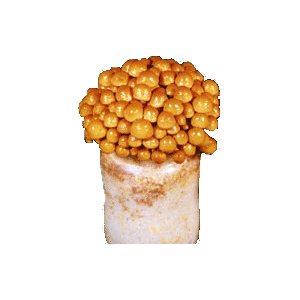
Grown in earthenware bottles.
BUNA-SHIMEJI

As found in nature.

Human-grown ans as sold in the supermarkets.
ENOKITAKE

As found in nature.

As fully human-grown.

As very youn human-grown and usually sold in the supermarkets. Very popular in soups, nabe and sukiyaki.
HIRATAKE
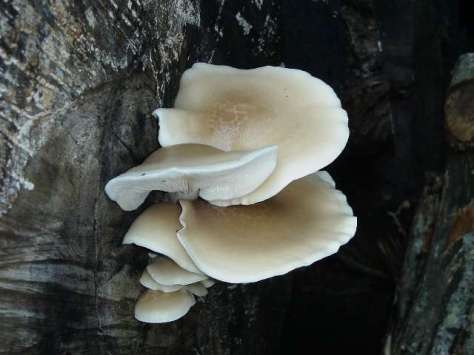
Also called Oyster Mushrooms as found in nature.
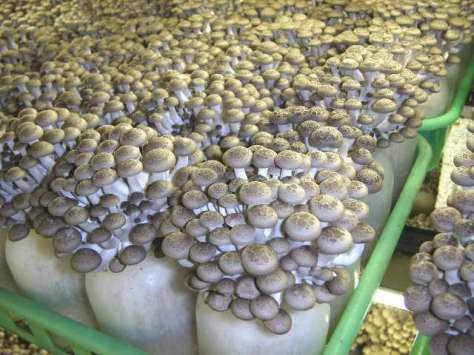
Human-grown.
MUKITAKE

As found in nature.
Will keep looking for more!
———————
10) Egg plants/Aubergines

The eggplant, aubergine, or brinjal (Solanum melongena) is a plant of the family Solanaceae (also known as the nightshades) and genus Solanum. It bears a fruit of the same name, commonly used as a vegetable in cooking. As a nightshade, it is closely related to the tomato and potato and is native to India and Sri Lanka.
That for the Wikipedia definition. The word Aubergine is mainly used in Europe. It comes in many shapes, sizes and even colours, but they share the same facts.
FACTS:
-Season: June to September in the Northern Hemisphere, but are available all year round thanks to greenhouse cultivation.
-Main beneficial elements: Potassium, Calcium, Magnesium, Vitamin C and B1, B2
-90% is water, but the skin contains a lot of polyphenols so useful against ageing and arteries cleaning!
It is also of a great help to fight diabetes.
VARIETIES:
As mentioned above, aubergines come in many varieties, but I am introducing here only the varieties and hybrids grown in Japan.
The first one I would to make known is particular to this country:

“Mizu Nasu”, litterally “Water Aubergine”
It has the particularity that it can be eaten raw cut and served like sashimi! With miso, pickled plum flesh, wasabi or soy sauce, it opens all kinds of possibilities fro vegans, vegetarians and raw food lovers!
“Bei Nasu”
An American hybrid popular for its large round size.
“Ao nasu”, or green aubergine
Also called “Midori Nasu”. The skin is hard but will soften quickly upon cooking. Appreciated grilled.
“Shiro Nasu”, or white aubergines.
The white colour is due to the absence of Nathnin.
Will get very soft upon cooking.
“Naga Nasu”, or litterally “Long Aubergine”.
Can grow up 30 cm long. Soft flesh, it is most popular grilled.
“Kamo Nasu”
A typical variety originally grown in Kyoto. Small and round with a finely-grained texture. Very popular in higher class gastronomy.
“Zebra Nasu”
Also called Italian Aubergine. Valued for its colourand designs.
Appropriate for slow cooking as hard.
“Tozen Nasu”
Small variety.
The small size of Tozen Nasu Aubergines makes it popular for pickles inparticular.
“Batten Nasu”
From Kumamamoto Prefecture. Sweet and containing a lot of water. Can be eaten raw.
“Okita Nasu”
Another small variety.
Okita Nasu are minuscule, making them very popular for pickles!
“Aka Nasu”, or red aubergine.
Large and beautiful, with little acidity, it is one of the most popular varieties in this country, especially grilled.
“Ko Nasu”, or litterally small aubergine.
Sweet, soft skin, almost containing no seeds, it is popular for pickles. Also exist round.
“Stick Taste”
A new variety, about 10 cm long and svelte. Popular stir-fried. Will keep its colour and design even cooked.
“Thai Nasu”
Small, roundish. Hard variety with a lot of seeds. Slow cooked in curries.
TIPS:
-Choose specimens with a deep colour, bright appearance and comparatively light weight.
-To preserve them, wrap them individually in cellophane paper before storing them in the refrigerator.
-Before cooking them, cut them and leave them in clear water util usage to prevent oxydizing.
If you want to fry them, cut them first and rub them with a lttle salt to take excess water out of them.
HEALTH FACTS:
-Combined with konnyaku/Devil’s Tongue Tuber/Elephant Foot Tuber, or okra, or enoki mushrooms, or burdock root, helps combat artery hardening, cancer and high blood pressure.
-Combined wiyh carrot, or kabocha, or spinach, or pink grapefruit, helps combat cancer and colds, helps skin rejuvenation.
-Combined with wax gourd, or tomato, or cockles, or small clams, helps combat diabetes, cancer and obesity.
-Combined with miso or enoki mushrooms, helps combat cancer, helps lower blood cholesterol and stimulates blood flow.
———————-
11) LOTUS ROOTS/RENKON

In Japan we are near the end of Lotus Roots season, but eat them all year round!
Lotus roots come from a plant called Nelumbo nucifera, also known by a number of names including Indian lotus, sacred lotus, bean of India, or simply lotus. This plant is an aquatic perennial. Under favorable circumstances its seeds may remain viable for many years.
A common misconception is referring to the lotus as a water-lily (Nymphaea), an entirely different plant.
Native to Greater India and commonly cultivated in water gardens, the lotus is the national flower of India and Vietnam.
The flowers, seeds, young leaves, and “roots” (rhizomes) are all edible. In Asia, the petals are used sometimes for garnish, while the large leaves are used as a wrap for food. In Korea, the leaves and petals are used as a tisane. Yeonkkotcha (연꽃차) is made with dried petals of white lotus and yeonipcha (연잎차) is made with the leaves. The rhizome (called ǒu (藕) in pinyin Chinese, ngau in Cantonese, bhe in Hindi, renkon (レンコン, 蓮根 in Japanese), yeongeun (연근) in Korean is used as a vegetable in soups, deep-fried, stir-fried and braised dishes. Petals, leaves, and rhizome can also all be eaten raw, but there is a risk of parasite transmission (e.g., Fasciolopsis buski): it is therefore recommended that they be cooked before eating.
FACTS:
-Season: September~December in Japan.
-Beneficial elements:
Lotus roots have been found to be rich in dietary fiber, vitamin C, potassium, thiamin, riboflavin, vitamin B1 & B6, phosphorus, copper, iron and manganese, while very low in saturated fat.
Various parts of the lotus are also used in traditional Asian herbal medicine.
TIPS:
-Choose specimens with a clear white cut section. There should not be any black spots.
-Use large specimen as they are easier to cut and use.
-To prevent oxydising, warp cut specimen into wet kitchen paper.
-Add vinegar to water when boling them to keep them white.
-The easiest way to peel them is to use a potato peeler!
COOKING:
The stamens can be dried and made into a fragrant herbal tea called liánhuā cha (蓮花茶) in Chinese, or (particularly in Vietnam) used to impart a scent to tea leaves. The lotus seeds or nuts (called liánzĭ, 蓮子; or xian liánzĭ, 鲜莲子, in Chinese) are quite versatile, and can be eaten raw or dried and popped like popcorn, phool makhana. They can also be boiled until soft and made into a paste, or boiled with dried longans and rock sugar to make a tong sui (sweet soup). Combined with sugar, lotus seed paste becomes one of the most common ingredient used in pastries such as mooncakes, daifuku, and rice flour pudding.
Japanese popular Renkon dishes:

“NIMONO”

“SUMONO”

“KIMPIRA”
“STUFFED LOTUS ROOTS”
“DEEP-FRIED LOTUS ROOT SANDWICH”

“CHIPS”
HEALTH FACTS:
-Combined with liver, or beef, or pork, or chicken, helps revitalize human blood and organs.
-Combined with turnips, or daikon, or beansprouts, or trefoil, helps digestion and bowels.
-Combined with leafy vegetables, or potato, or apples, helps combat cancer and obesity.
-Combined with konnyaku, or celery, or lettuce, or green peppers, helps lower blood cholesterol. helps combat artery hardening and prevent heart diseases.
—————————
12) SANSAI/EDIBLE WILD JAPANESE MOUNTAIN
PLANTS

Foolowing the recent posting on the all-vegetable dinner at Tomii, Rich nicely asked me for more information, especially concerning the names of wild edible plants found in Japan as he rightly recognized it could come very handy to vegans and vegetarians everywhere!
Now, I titled this particular posting “Sansai/Wild Mountain Plants”, because they also include wild fruit that can be eaten both as vegetables and fruit with various preparations.
Some can be boiled, others fried, prepared as tempura, cooked in soup, prepared as pickles or jam, etc.
As it would become far too big (already massive, but inexhaustive) a posting if I wrote everything, please pick up one item at a time if you want more explanations and I will write an individual article for your pleasure!
Here we go:
(No particular order)

AINU NEGI: ALIUM VICTORIALIS

AKEBI: CHOCOLATE VINE

AMADOKORO: POLYGONATUM ODORATUM
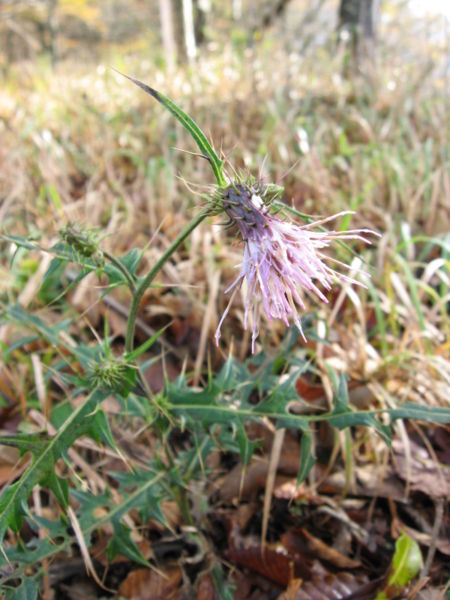
AZAMI: THISTLE

FUKINOTO: GIANT BUTTERBUR

HAMABOUFUU: GLEHNIA LITTORALIS

HANGONSOU: SENECIO CANNABIFOLIUS

HASUKAPPU: LONICERA CAERULEA/HASCUP
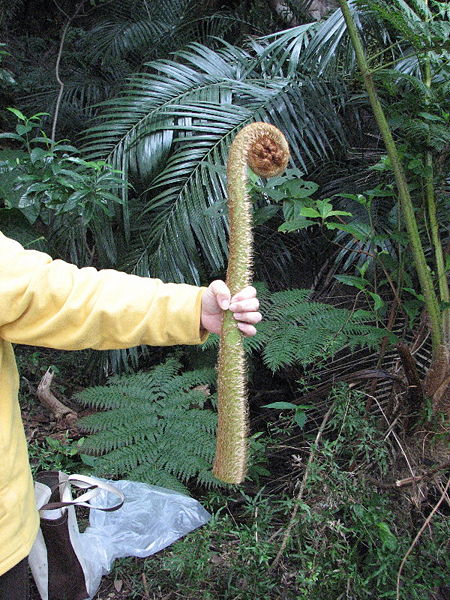
HIKAGEHEGO: FLYING SPIDER MONKEY TREE FERN

IRAKUSA: URTICA THUNBERGIANA

ITADORI: JAPANESE KNOTWEED

KATAKURI: DOGTOOTH VIOLET

KIBOUSHI: PLANTAIN LILY HOSTA FORTINEI ( a variety of Hosta Montana)

KOGOMI: OSTRICH FERN (exists as green and red)

KOSHIABURA : ASCATHOPANAX SCIADOPHYLLOIDES

KUKO: CHINESE WOLFBERRY

KUSAGI: HARLEQUIN GLORY BOWER PEANUT BUTTER SHRUB

MATATABI: SILVER VINE

MITSUBA: JAPANESE HONEYWORT

NIRINSOU: ANEMONE FLACCIDA

NOBIRU: ALIUM MACROSTEMON

OYAMABOKUCHI: SYNURUS PUNGENS

RYOUBU: CLERTHRA BARBINERVIS

SARUNASHI: ACTINIA ARGUTA

SERI: JAPANESE PARSLEY

SUBERIYU: COMMON PURSLANE

TAKENOKO: BAMBOO SHOOTS (SPROUTS)

TANPOPO: DANDELION

TARA NO ME: ARALIA ELATA

TSUKUSHI: HORSETAIL
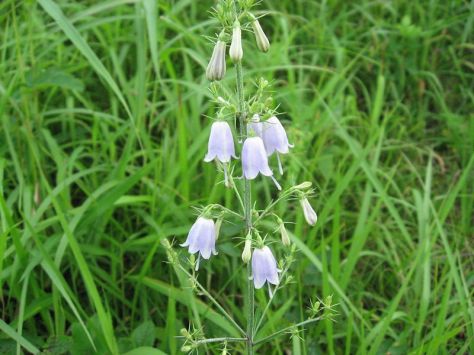
TSUROGANENINJIN: ADENOPHORA TRIPHYLLA

UDO: ARALIA CORDATA

YAMAUDO: same as UDO (above)

URUI: HOSTA MONTANA

WARABI: PTERIDIUM AQUILINUM

YAMABUDO: CRIMSON GLORY VINE

YAMAWASABI: WILD HORSERADISH

ZENMAI: OSMUNDA JAPONICA
—————————
Still have to find the English names for the following ones!

AIKO

AKAMIZU

AOMIZU

INUDOUNA

SHIDOKE
————————
13) SALICORNE

I decided to run this posting on this rare vegetable following a query from my dear friend Jenn.
Salicorne has a slightly salty with a fresh, not overpowering, herbal taste. It grows exceptionally well in salt marshes and can sometimes be harvested under wharves. Although salicorne is a weed and does grow by the sea, it does not look like seaweed. It is more like a sprig off a tree with small dark green fleshy branches.
Apparently they are grown or collected in France onlyalong its Westen and Northern shores.

Salicorne has no comfortable English name. Some call it sea asparagus, and it does have a little of the sweet flavour of that vegetable. It is also known as slender glasswort, La salicorne, or criste-marine and perce-pierre in French. Its etymology is actually the Arabic word: “salcoran”. It is also thought to mean salt (sali) horn (corne) in French. So salicorne is how it is usually called in English and French.
It is exported to Canada fresh, pickled or in cans.
Human-grown as opposed to natural salicorne is better suited for cooking as it does not include all kinds of unwanted twigs and other unrelated plants when harvested in the wild.
Vegetarians and vegans can eat it fresh as it is, in salads or as pickles.

Cooking/cuisine suggestion:
Smoked herring marinated in Salicorne cream:
Place 250 g of smoked herring in a deep oven dish. Cover fish with milk and let marinate for 2 hours. Drain and take moisture out by placing fish on kitchen paper.
Put them back inside the oven dish and cover with whote wine. Let them marinate again for 2 hours.
Drain them and cut the fish acrss into slices 2 or 3 cm thick.
Place te fish slices in a terrine dish, alternating them with thin slices of onion and carrot, a few parsley leaves, a branch of thyme and a leaf of laurel both chopped fine, some pepper and a tablespoon of finely cut wakame/Japanese seaweed. Cover with olive oile and let marinate inside fridge for 4~5 hours.
Take out a dozen sprigs of vinegared salicorne (canned), cut them finaly and mix them into a bowl of fresh cream that one can use later at will.
Place herring, onions and carrots on a dish with a little oil from the marinade.
Serve with hot boiled potatoes!
——————————
14) String Beans, French Beans and Common Beans

Common beans, when green and immature are either called String Beans or French Beans when they don’t have a string.
When reaching maturity they gave way to all kinds of beans.
They were first discovered in Central and South America in the 16th Century and were later introduced in Europe, then China. The French first planted the beans in Japan in rhe second half of the 19th Century.
90% of the crop is harvested three times a year in Hokkaido Island in Japan.
Ther are two main varieties in this country:

“Dojyo-Ingen”, also called “Kentucky Wonder”. Slightly soft variety.

“Saaber-Ingen”, thinner and rounder than above without strings.
The Japanese usually boil them lightly or just just cut them in trunks about 5 cm long and add them to all kinds of dishes from clear soups to sauteed food.
OTHER VARIETIES
Mokko Ingen
This variety is gaining popularity for its large size.
Recently found in French and Italian restaurants.
Make for great decoration onthe plate and are succulent lightly steamed, fried or stewed. Can reach 20 cm.
Juroku Sasage
Very thin and long (30 m), grown in Aichi Prefecture. Soft and easy to cook and eat. They are called because they contain 16 (juroku) seeds each.
Kintoki Mame
More widely known for producing azuki bean varieties.
Can be eaten young and greenlike string beans.
Akishima Sasage
Popular for their varying colors. Grown in geenhouses in Gifu Prefecture.
The beans are delicious when stewed.
FACTS:
-Season: June~September
-Main beneficial elements: Protein, Carotene, Vitamin B1 nad Bz, Vitamin C, Vitamin K, Calcium, Calcium, Magnesium and vegetal fibers.
-Eaten with other food high in protein, their Vitamin C are easily ingested by human bodies.
Cooked with oil, their carotene will be easily assimilated by human bodies.
TIPS:
-Just after boiling drain them and let cool inside a sieve. They will be tastier for it.
-If you have plenty, first boil them before storing them in the refrigerator.
-Peel strings away before cooking.
-Choose firm and straight specimens.
HEALTH FACTS:
-Combined with Judas Ear mushrooms, or Konnyaku, or Bamboo shoots, help combat large intestine cancer and obesity.
-Combined with Yoghurt, or natto, or Spinach, or hijiki/sweet seaweed, helps combat intestines poisoning and constipation.
-Combined with Agar agar or onion, help reduce blood cholesterol and high blood pressure.
-Combined with Broccoli, or rape blossoms, or kabocha, or tomato, helps prevent cancer, helps skin rejuvenation and recovery from illness.
—————————–
15) TARO/SATO IMO
Taro, also called Dasheen, and one of several plants called Cocoyam ,is a tropical plant grown primarily as a vegetable food for its edible corm, and secondarily as a leaf vegetable. It is considered a staple in Oceanic cultures. It is believed to be one of the earliest cultivated plants. In its raw form the plant is toxic due to the presence of calcium oxalate, although the toxin is destroyed by cooking or can be removed by steeping taro roots in cold water overnight. Taro is closely related to Xanthosoma and Caladium, plants commonly grown as ornamentals, and like them it is sometimes loosely called elephant ear.
The name “taro” is from Tahitian or other Polynesian languages; the plant is also called kalo (from Hawaiian), gabi in The Philippines, dalo in Fiji, Alu (अळू) in Marathi, seppankizhangu in Tamil, chembu in Malayalam, Arvee, Arvi, or Arbi in Hindi, Kosu in Assamese, Kochu(কচু) in Bengali, and Karkalo in Nepali.
In Japan, it is called satoimo (サトイモ, satoimo), (kanji: 里芋) “village potato”. The “child” and “grandchild” corms which bud from the parent satoimo, are called imonoko (芋の子, imonoko). Satoimo has been propagated in Southeast Asia since the late Jōmon period. It was a regional staple food before rice became predominant.
The tuber, satoimo, is often prepared through simmering, but occasionally grated and eaten raw or steamed. The stalk, zuiki, can also be prepared a number of ways, depending on its variety.
It is a very popular tuber in Japan and although the best season runs from September to November, it is very easy to conserve and is extensively used in many Japanese dishes.
It is of especially great value to vegetarians and vegans!
Here are some sample of cooking amenable to special priorities:
Sato Imo An/Taro in sweet and sour sauce
Taro wholly fried and seasoned with umeboshi/pickled Japanese plums
Sato Imo Nikome/Stewed Taro
TARO/SATO IMO VARIETIES:
Ishikawawase, very tender once steamed. Must be peeled before consumption.
Dodare, with strong stickiness, very soft, prevalent in Eastern Japan.
Kyo Imo, also called Take no Ko Imo, very popular for its long shape.
Chiba Maru, great and elegant taste.
Ebi Imo, although called Tou no Imo, quite sticky.
Yatsu Gashira, “Eight heads”, great stewed.
Serebesu, little stickiness, can be cooked as normal potato.
Hasu Imo, is not actually the tuber itself but the stems, eaten as green vegetables.
Yamato Wase, from Niigate and Toyama Prefectures, very white, sticky and fine-grained.
Yahata Imo, from Niigata Prefecture, great for stews.
Dentouji Sato Imo, sticky. Stems can be also eaten.
Zuiki Imo, are actually edible shoots of sato imo, mainly cooked in stews.
FACTS:
-Very rich in potassium and phosphorus!
-Vitamins B1, B2 and C.
-Rich in fibers.
TIPS:
-Best season: September~November.
-Prevent them from getting dry. Wrap them in newspaper with their attached mud/soil and keep in a well ventilated place away from the light.
-When cut, the best specimens are uniformly white without specks or blemishes.
-Very beneficial against obesity.
HEALTH FACTS:
-Combined with eggs, or chicken, or sardines, or bonito, helps brain activity and increases stamina.
-Combined with tofu, or dry bonito shavings, or skimmed milk, helps brain activity.
-Combined with mushrooms, or devil’s tongue tuber, or burdock root, helps lower blood cholesterol and cobat high blood pressure and cancer.
-Combined with seaweed, or miso, or onions, or chili peppers, helps with digestion and blood flow.
————————-
16) AVOCADO
The avocado (Persea americana), aguacate (Spanish), butter pear or alligator pear, is a tree native to the Caribbean, Mexico, South America and Central America, classified in the flowering plant family Lauraceae along with cinnamon, camphor and bay laurel. The name “avocado” also refers to the fruit (technically a large berry that contains a large seed) of the tree which may be egg-shaped or spherical.
Avocados are a commercially valuable fruit and are cultivated in tropical climates throughout the world (and some temperate ones, such as California), producing a green-skinned, pear-shaped fruit that ripens after harvesting. Trees are partially self-pollinating and often are propagated through grafting to maintain a predictable quality and quantity of the fruit.
P. americana, or the avocado, originated in the state of Puebla, Mexico. The oldest evidence of avocado use was found in a cave located in Coxcatlán, Puebla, Mexico that dates to around 10,000 years BCE.
The word ‘avocado’ comes from the Nahuatl word ahuacatl (‘testicle’, a reference to the shape of the fruit). Avocados were known by the Aztecs as ‘the fertility fruit’.
The subtropical species needs a climate without frost and with little wind. High winds reduce the humidity, dehydrate the flowers, and affect pollination. In particular, the West Indian type requires humidity and a tropical climate which is important for flowering. When even a mild frost occurs, premature fruit drop may occur, although the Hass cultivar can tolerate temperatures down to −1°C. The trees also need well-aerated soils, ideally more than 1 m deep.
An average avocado tree produces about 120 avocados annually. Commercial orchards produce an average of 7 tonnes per hectare each year, with some orchards achieving 20 tonnes per hectare.
High avocado intake has been shown to have an effect on blood serum cholesterol levels. Specifically, after a seven-day diet rich in avocados, hypercholesterolemia patients showed a 17% decrease in total serum cholesterol levels. These subjects also showed a 22% decrease in both LDL (bad cholesterol) and triglyceride levels and 11% increase in HDL (good cholesterol) levels.[20] Additionally a Japanese team synthesised the four chiral components and identified (2R, 4R)-16-heptadecene-1, 2, 4-triol as the natural antibacterial component.
The fruit has a markedly higher fat content than most other fruit, mostly monounsaturated fat, and as such serves as an important staple in the diet of various groups where access to other fatty foods (high-fat meats and fish, dairy, etc) is limited.
The avocado is very popular in vegetarian cuisine, making an excellent substitute for meats in sandwiches and salads because of its high fat content.
FACTS:
-Contains large amounts of unsaturated fats, Potassium, Phosphorus, Vitamins B1, B2, and B6, Vitamin C, Vitamin E, Pantoten acid and vegetal fibers.
-Helps lower bad cholesterol and high blood pressure.
-Season: available all year long thanks to high import/export.
TIPS:
-Choose green hard specimens if you have the time to let them ripen to your taste. As soon as it is ripened keep in the fridge, but consume as soon as possible.
-When choosing ripe specimens, choose firm and plentiful. Loose space under the skin is a bad sign.
HEALTH FACTS:
-When combined with apple or lemon, help lower blood cholesterol
-When combined with asparaguses, helps combat skin ageing.
-Generally helps combat bad cholesterol and ageing.
COOKING TIPS:
Avocadoes of course are great raw or mashed in puddings, dips, sauces and drinks for instance, but they are also great cooked!
They can deep-fried when unripe (see above picture!).
They can be stir-fried in a vegan recipe.
They are great in a vegan gazpacho!
And beautiful stir-fried with chicken!
And don’t forget all the possible combinations as sushi!
———————–
17) PEPPERS, BELL PEPPERS, PAPRIKA
Bell pepper or sweet pepper is a cultivar group of the species Capsicum annuum (chili pepper). Cultivars of the plant produce fruits in different colors, including red, yellow, green and orange. Bell peppers are sometimes grouped with less pungent pepper varieties as “sweet peppers”. Peppers are native to Mexico, Central America and Northern South America. Pepper seeds were later carried to Spain in 1493 and from there spread to other European, African and Asian countries. Today, Mexico remains one of the major pepper producers in the world.
The misleading name “pepper” (pimiento in Spanish) was given by Christopher Columbus upon bringing the plant back to Europe. At that time peppercorns, the fruit of Piper nigrum, an unrelated plant originating from India, were a highly prized condiment; the name “pepper” was at that time applied in Europe to all known spices with a hot and pungent taste and so naturally extended to the newly discovered Capsicum family. The most commonly used alternative name of the plant family, “chili”, is of Central American origin. Bell peppers are botanically fruits, but are generally considered in culinary contexts to be vegetables. When cut off, the top of the bell pepper is referred to as a “pepper pan”.
Paprika
The term “bell pepper” or “pepper” or “capsicum” is often used for any of the large bell shaped capsicum fruits, regardless of their color. In British English, the fruit is simply referred to as a “pepper”, or additionally by colour (as in the term “green pepper”, for example), whereas in many Commonwealth of Nations countries, such as Australia, India, Malaysia and New Zealand, they are called “capsicum”. Across Europe, the term “paprika”, which has its roots in the word for pepper, is used—sometimes referred to by their color (e.g., “groene paprika”, “gele paprika”, in Dutch, which are green and yellow, respectively). Paprika also refers to the powdered spice made from the same fruit. In France it is called “poivron”, with the same root as “poivre” (meaning “pepper”), or “piment”. In Japan, the word ピーマン (“pîman” from the French) refers only to green bell peppers, whereas パプリカ (“papurika” from paprika) refers to bell peppers of other colors.
In the United States and Canada, in addition to the terms “bell pepper” and “sweet pepper,” the fruit is often referred to simply as a “pepper” or referred to by color (e.g. “red pepper”, “green pepper”), although the more specific term “bell pepper” is understood in most regions. In parts of Indiana, Ohio, and Pennsylvania, the fruit is called a “mango”. The origin of this use is in the use of the term “mango” or “mangoed” to refer to pickled fruits. At a certain time, mangoes were available in the United States only in pickled form. Later, it became common in these regions to use bell peppers in pickled form, thus the term “mangoed peppers” or “mango peppers,” later shortened to “mangoes.”
In Russia it is commonly called болгарский перец (bolgarskiy perets), meaning Bulgarian pepper. In Denmark the bell pepper is referred to as “peberfrugt”, meaning pepper-fruit. In Germany, Finland, Norway, Sweden, former Yugoslavia, the Netherlands and Belgium it is known as “paprika”.
In Brazil it is commonly called Pimentão, meaning Big pepper. It’s widely used in a variety of dishes, like pasta, rice and other dishes from Cuisine of Brazil.
In Argentina it is called “Morrón”. Green and red bell peppers are usually found in small grocery stores; the yellow ones tend to be in the supermarket. Grilled, they may form part of the traditional barbecue of this country, called “Asado” (Castilian Spanish for ‘roasted’ or ‘grilled’).
In Costa Rica it is called “chile dulce” or sweet chili and many typical dishes include it as part of the ingredients.
In India, it is commonly called “capsicum” in English, in addition to native terms such as “Simla mirch” (“Simla chili”).
In Nepal it is called “bhede khursani”. It is eaten with fried noodles, and is cooked and eaten with any vegetable, but bhede khursani is never eaten raw.
In Sri Lanka it is called “Maalu Miris” in Sinhalese and used in “curries” as a vegetable. “Miris” is Chilli, the hotter variety which is used as a hot spice, and “Maalu” means Vegetable; hence, “Maalu Miris” indicates the less spicy version, which is suitable for cooking as a vegetable, instead of using as a spice. With the similar meaning, bell pepper is called “kaRi miLakaay” (கறிமிளகாய்) in Tamil language.
In Egypt it is commonly called “filfil akhdar”, where “filfil” means pepper and “akhdar” means green. It is eaten as a raw snack, in salads, in various soups and stews, and is also cooked stuffed with a rice and beef filling.
In South Korea, the peppers that are green in color, are the only ones that are called “pimang” (피망). All other colors of bell peppers are referred to as “paprika” (파프리카).
In China, peppers that are green in color, including green bell peppers and hot peppers, are called 青椒 (pinyin: qīngjiāo), meaning “green pepper”. All colors of bell peppers can also be referred to as 柿子椒 (pinyin: shìzǐjiāo).
That is for the excellent information found on Wkipedia!
The color can be green, red, yellow, orange and more rarely, white and purple, depending on when they are harvested and the specific cultivar. Green peppers are less sweet and slightly more bitter than red, yellow or orange peppers. The taste of ripe peppers can also vary with growing conditions and post-harvest storage treatment; the sweetest are fruit allowed to ripen fully on the plant in full sunshine, while fruit harvested green and after-ripened in storage are less sweet.
Here are the most common varieties foun in Japan:
From top to bottom and left to right:
Green, red and yellow peppers (bell peppers)
Paprika and Jumbo Piman/Pepper
Red peppers are ripe green peppers, while the jumbo pepper is valued for its size.
“Tongari Piman/Pepper”
Valued for its shape and fewer seeds.
“Ama-Kara/Sweet and hot”
Also called banana peppers when ripe.
Banana Pepper
Valued for its mild taste, making it popular to a larger audience.
More colour varieties!
Anastasha Paprikas
These are becoming increasingly popular in Japan and come in red, almost black and yellow.
FACTS:
-Season: from June to October, although available on the markets all year round.
-Main Beneficial ingredients: Carotens, Vitamins B1, B2, B6, C, K, Vegetal fibers, Potaasium, Magnesium, and Phosphourous.
-Greatly beneficial to skin when fried!
-Should be combined with oil (fried, vinaigrette) whwnever possible for better absorption by human bodies. Are generally beneficial against high blood pressure and helps recovery from fatigue.
TIPS:
-Choose specimens with unblemished stem cuts. The older, the more change in colour there.
-They are best stored inside a vinyl pouch in the refrigerator.
Old specimens will show blemishes and black spots.
HEALTH FACTS:
-Pepper bells combined with whole rice, or yam, or scallops, or oysters, will help combat diabetes and obesity, and revitalize digestive system.
-Pepper bells combined with onion, or konnayaku, or celery, will help combat high blood pressure and artery ageing.
-Pepper bells combined with shiso/perilla, or turnips, or leeks, or chili peppers, will prevent digestive system illnesses and help blood circulation.
-Pepper bells combined Chinese chives, or shiitake mushrooms, or egg plant/aubergine, will help combat cancer, will provide stamina, help combat general ageing and help skin.
-Paprika combined with olive oil, will help combine stress and skin.
-Parika combined with turnips, or leeks will hep blood circulation and combat digestive system illnesses.
———————————
18) CABBAGE
The cabbage is a popular cultivar of the species Brassica oleracea Linne (Capitata Group) of the Family Brassicaceae (or Cruciferae), and is used as a leafy green vegetable. It is a herbaceous, biennial, dicotyledonous flowering plant distinguished by a short stem upon which is crowded a mass of leaves, usually green but in some varieties red or purplish, which while immature form a characteristic compact, globular cluster (cabbagehead).
The plant is also called head cabbage or heading cabbage, and in Scotland a bowkail, from its rounded shape. The Scots call its stalk a castock, and the British occasionally call its head a loaf.
Cabbage leaves often display a delicate, powdery, waxy coating called bloom. The sharp or bitter taste sometimes present in cabbage is due to glucosinolate(s).
The cultivated cabbage is derived from a leafy plant called the wild mustard plant, native to the Mediterranean region, where it is common along the seacoast. Also called sea cabbage and wild cabbage, it was known to the ancient Greeks and Romans. The English name derives from the Normanno-Picard caboche (head), perhaps from boche (swelling, bump).
That for the Wikipedia definition.
FACTS:
-Cabbages are also a good source of riboflavin.
-Cabbages are an excellent source of vitamins A, C, and K. It also contains significant amounts of glutamine, an amino acid which has anti-inflammatory properties.
-It is a source of indole-3-carbinol, or I3C, a compound used as an adjuvant therapy for recurrent respiratory papillomatosis, a disease of the head and neck caused by human papillomavirus (usually types 6 and 11) that causes growths in the airway that can lead to death.
-It also contains a marked amount of Calcium, Amino Acids, Potassium and Magnesium.
-The best season from January to May, and June to July.
VARIETIES:
Japan is the World’s No 5 cabbage grower, and so many varieties are available here:
“Haru Kabetsu/Haru Tama” or Spring Cabbage.
Planted in the Fall and harvested in Spring.
The inside is yellow and soft. Can be eaten raw.
“Fuyu Kabetsu/Kantam” or Winter Cabbage.
Planted in Summer and harvested in Winter.
Large number of leaves make it a very dense cabbage.
Great for stews as the shape will hold.
“Kougen Kabetsu” or Plateau Cabbage.
Planted at high altitude in Nagano and Gunma Prefectures in Spring and harvested in Summer and Fall.
Very cold-resistant.
“Petit-Vert”
Very rich in Vitamin C and carotenes, as well as many other nutrients, it is becoming increasingly popular as an organic vegetable both in homes and restaurants. Its small size and tenderness make it easy to use both as decoration and vegetable dish.
“Green Ball”.
Very popular raw in salads or pickled.
“Saboi Kabetsu”/Savoy Cabbage.
Prized for its eleganat looks.
It originated from French Savoie.
Very popular in stews.
“Murasaki kabetsu”/Violet or Red Cabbage.
Not to be confused with the Italian Trevise.
Natural colour.
Very popular raw in salads or pickled.
“Takenoko Kabetsu” or Bamboo Shoot Cabbage.
Popular for its shape. Very soft, great raw in salads.
“Me Kabetsu” or Brussels Sprouts.
Contains 4 times as many Vitamin C as other cabbage varieties.
Very popular in Japanese gastronomy thanks to its small size and taste.
“Kuro Kabstu” or Black Cabbage (Carboronero).
Actually of a very dark green colour.
High in fibers and rich in flavour, popular in stews.
“Keeru Kabetsu” or Kale Cabbage.
High in Vitamin C and carotenes.
Popular as vegetable juice and in stews.
“Afurika Kabetsu”, or African Cabbage.
Also called by its Swahili name, Skumaiki.
has been called the Super Cabbage for its high contents in nutrients.
TIPS:
-To preserve it cut, wrap it tightly in xellophane paper as not to allow any air between the leaves before you stor it in the fridge.
-Choose specimens with thick outer leaves.
-After cutting it. sprinkle with water as it will be easily absorbed by the leaves, amking easier to eat, but do it quickly!
-Choose specimens that feel heavy and tight.
HEALTH FACTS:
-Combined withbasket clams, or cockles, or liver, or vegetal oil, helps combat anemia and ageing, reinforces the digestive system and general health.
-Combined with lemon, or orange, or grapefruit, ortangerines, helps combat artery hardening and stress, helps blood circulation and skin rejuvenatin.
-Combined with spinach, or eel, or carrot, or Chinese chives, helps combat common colds and canacer, promotes virility.
-Combined with Cashew nuts, or vegetal oil, or peanuts, or cod roe, helps combat stress and ageing, and promotes memory.
—————————-
YAMA NO IMO/YAMAIMO/JAPANESE YAM
Yama no Imo Plant
Yama Imo or Yama no Imo/山芋 is the Japanese name for Japanese Yam.
It has been picked in its natural form and cultivated for eons in Japan where it comes into many recipes, either as a vegetable of its own or as an additive to Japanese recipes as a liaising ingredient.
It is also extensively used in vegetarian (vegan) cuisine in this country.
It is also very much valued for its stamina and medicinal properties.
FACTS:
-Contains a high amount of potassium, calcium, magnesium, natrium and other minerals.
Rich in Vitamin B1, B2, B6 and C and vegetal fibers.
-Easy to digest and eat either raw or cooked.
VARIETIES:
There are quite a few varieties and can be all used in the same way:
Yama no imo: Nagaimo/長い芋
Shizenjyo is the natural and highly priced Japanese Yam!
Ichyo Imo
Tsukune Imo
Mukago
Mukago is actually the aerial seed and can be eaten. Slightly expensive considering the size, but great taste, boiled or deep-fried.
TIPS:
-Choose a specimen that shows a uniform colour without blemishes.
-Some people’skin might get irritated when cutting the yama Imo. In this case deep-freeze it first and cut it as it is.
-Preserve as a whole wrapped into newspaper inside the fridge.
-Preserve it cut inside an airtight vinyl bag in the freezer.
COOKING:
It is greatly appreciated just cut in thin slices/sticks with a little ponzu, shiso and ponzu!
It is often served as a component of an array of dishes into a full Japanese meal. Grated into paste, it is called “tororo”.
It can be sauteed/fried with olive oil, sesame oil or butter!
Grated, it can combined with tofu,
or into okonmiyaki!
It can also become a great appetizer when combined with agar agar!
Europeans and Americans will appreciate it as a gratin!
HEALTH FACTS:
-Combined with daikon, or turnips, or Chinese cabbage, or chili peppers, helps reinforce the digestive system and appetite.
-Combined with okra, or lotus roots, or nameko mushrooms, helps lower blood cholesterol and provides additional stamina.
-Combined with soy beans, or pomegranate, or myoga ginger, helps balance hormones and blood circulation.
-Combined with cabbage, or potatoes, or broccoli, or Chinese cabbage, helps combat cancer and ageing.
———————————
20) KOMATSUNA/JAPANESE MUSTARD SPINACH
This the 20th installment of a very long (yet incomplete) series of postings to share information on vegetables, especially the ones available in Japan as many expats (and Japanese) and friends abroad need more of such data for their daily requirements.
Please refer to VEGETABLES FACTS & TIPS for other vegetables!
Incidentally、 nothing, pictures included, is copyrighted in my food blogs, so please feel free to use anything!
Komatsuna (Brassica rapa var. perviridis or var. komatsuna, コマツナ(小松菜、冬菜、鶯菜) is a type of leaf vegetable. It is a variant of the same species as the common turnip. It is grown in Japan, Taiwan and Korea. It is also known as Japanese Mustard Spinach and is usually stir-fried, pickled, boiled and added to soups or used fresh in salads. It is an excellent source of calcium. It is also used for fodder in some Asian countries. The leaves of komatsuna may be eaten at any stage of their growth. In a mature plant they are dark green with slender light green stalks, around 30 cm long and 18 cm wide. It is most often grown in the spring and autumn, as it cannot endure extreme heat or cold for more than a short time.
That for the Wikipedia information.
FACTS:
-Komatsuna is a very interesting vegetable as it contains a lot of calcium to be added to Potassium and Natrium.
-It is also rich in Vitamin A Beta carotenes, K, B2, C and vegetal fibers.
-Season: December to February and longer in colder countries.
-Originally it was grown in Eastern Japan in Edo Times, but is now available in Osaka and other cities.
-Combined with fish it is particularly beneficient to human bones.
TIPS:
-Can be eaten raw or cooked, sligtly bpoied and stir-fried.
-To preserve more easily, boil them lightly before storing in the fridge.
Ought to be wrapped in newspaper and stored inside the fridge if raw. Can be stored that way for p to 3 days.
-To preserve it beautiful green colour, boil it lightly and trnsfer it immediately into iced water. As it will change colour in contact with oil, add dressing at the very last second.
COOKING SUGGESTIONS:
With pasta!
Komatsuna Bread for vegetarians!
For vegetable and fruit juice!
Komatsuna Kimchi!
VARIETY:
Chijimi Komatsu
A smaller and “frizzled” variety, sweeter than the usual komatsuna.
Can be eaten the same way. Great slightly boiled with ground sesame seeds and dressing.
HEALTH FACTS:
-Combined with dried sardine whiting, or with sakura ebi/Cherry blossom shrimps, or with scallops, or with konbu/seaweed, helps preserve human bones, and activate rejuvenation.
-Combined with tomatoes, or with wakame seaweed, or with carrots, or with green chili peppers, povides for extra stamina, and helps prevent cancer.
-Combined with rice vinegar, or with orange, or with lemon, or with strawberries, helps prevent stress, and sore back/articulations, and helps swift recovery.
-Combined with konnyaku/devil’s tongue tuber, or with mushrooms, or with celery, or with bamboo shoots, helps combat obesity and prevent high blood pressure. Helps lower down blood cholesterol.
———————————
21) MYOGA/MYOGA GINGER
Following a comment by Debra at Hapabento, I thought it might be a good time to (re-) introduce this evry colourful and tasty vegetable, namely Myoga or Myoga Ginger.
Although it is called Myoga Ginger, it is another variety of ginger cultivated for its bud and flower instead of its root.
Wikipedia definition:
Myōga (茗荷) or myoga ginger (Zingiber mioga, Zingiberaceae) is an herbaceous, deciduous, perennial native to Japan that is grown for its edible flower buds and flavorful shoots. Flower buds are finely shredded and used in Japanese cuisine as a garnish for miso soup, sunomono and dishes such as roasted eggplant.
A traditional crop in Japan, myoga has been introduced to cultivation in Australia and New Zealand for export to the Japanese market.
As a woodland plant myoga has specific shade requirements for its growth. It is frost-tolerant to 0F, -18C possibly colder.
Myoga flowers are edible!
FACTS:
-Myoga can be cultivated between June and October, and again bewteen March and May.
-Very high contents in Potassium and Calcium, Also contains Magnesium, Iron and manganese.
-Vitamin B1, B2 and B6. Vegetal fibers.
-It is considered as a natural herb medicine which helps preserve one’s stamina in summer, especially, as far back as the 3rd Century. It does help digestion.
-Preservation is done best by wrapping in kitchen paper inside the fridge. Can be safely kept for 10 days.
TIPS:
-Choose firm and “tight” specimens. When cutting them through the the leaves should stick tightly to eah other.
-Choose specimens with a nice and bright colour, well-rounded and compact in shape.
VARIETY:
Myoga Take/”Myoga Bamboo”
Myoga Take are the young stems of myoga which are also edible.
RECIPES:
Myoga pickled in miso paste
Myoga can be pickled in many manners with miso, sweet vinegar, etc. on ots own or together with other vegetables.
It can be made into great vegan or omnivore sushi rolls!
How about those sushi nigiri?
Great, thinly chopped on tofu!
Actually, the possibilities are endless!
HEALTH FACTS:
-Combined with yam, or with shiso/perilla leaves, or with cabbage, or with leek, helps restore appetite, helps combat ageing and prevent cancer.
-Combined with wakame seaweed, or with mackerel, or with sardines, or with tofu, helps prevent high blood pressure and heart diseases, and has a general beneficial health influence.
-Combined with eels, or with oyters, or with garlic, or with onions, helps restore health, prevent cancer and provide for stamina.
-Combined with cucumber, or with celery, or with oysters, or with gourd, helps with body elimination and prevent kidney diseases.

















































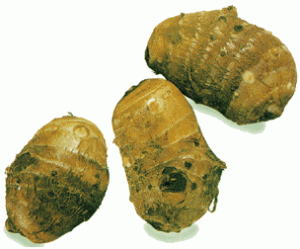





























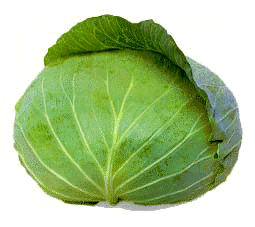






































WOW ! What a nice blog site. Very informative and impressive for the vegetables lover. I hope you will continue your good work.
Good luck !
LikeLike
Thank you so much for the compliments!
LikeLike
Thank you Robert for a wonderful site. I have lots of Japanese Knotweed in my garden, sometimes steam shoots sweet with maple syrup (like rhubarb) or savoury with say flax or t.sesame oil (like an asparagus) -how else is it prepared? Pleae tell me about itadori tea, making it, how often to drink, etc. re resveratrol content. Do Japanese also prepare roots, leaves in dishes- besides shoots?
LikeLike
Dear Barbara!
Greetings!
Thank you so much for your kind comments!
You could prepare knotweed as oven gratin if you are not vegetarian.
If you are vegetarian or vegan, tempura would be great. Replace the egg white in the batter with cornstarch!
As far as I know the Japanese do not eat the roots!
Choose young specimens!
If you need more information, don’t hesitate!
Best regards,
Robert-Gilles
LikeLike
Dear Barbara!
Greetings!
Thank you so much for your kind comments!
You could prepare knotweed as oven gratin if you are not vegetarian.
If you are vegetarian or vegan, tempura would be great. Replace the egg white in the batter with cornstarch!
As far as I know the Japanese do not eat the roots!
Choose young specimens!
If you need more information, don’t hesitate!
Best regards,
Robert-Gilles
LikeLike
It is better to include good receipies with these vegetables also
LikeLike
very good and informative site
LikeLike
very good and informative site
LikeLike
I liked the website and information. I will be going to Siberia in the summer and would like to send some photos and watercolors to see if I have identified the wild plants correctly, I may find some that are interesting. Can you email me back?
LikeLike
Dear Miles!
Greetings!
Please do send the pics and drawings!
I will post an article for you!
Do you have a blog?
Cheers,
Robert-Gilles
LikeLike
This is so funny- I just discovered the existence of “honeyberries” aka lonicera caerulea today- and I googled them- and guess whose blog came up? haha! It’s a small world.
LikeLike
Isn’t it? LOL
LikeLike
Fantastic! I’m just about to dig a veggie plot in our back garden, so now I have an idea of which varieties to look out for! Will be back…
LikeLike
Dear Angela!
Greetings!
Looking forward to talk to you again!
Talking of garden, why don’t visit Rowena’s blog at http://rubbahslippahsinitaly.blogspot.com/
I’m sure you willhav eplenty to share!
Cheers,
Robert-Gilles
LikeLike